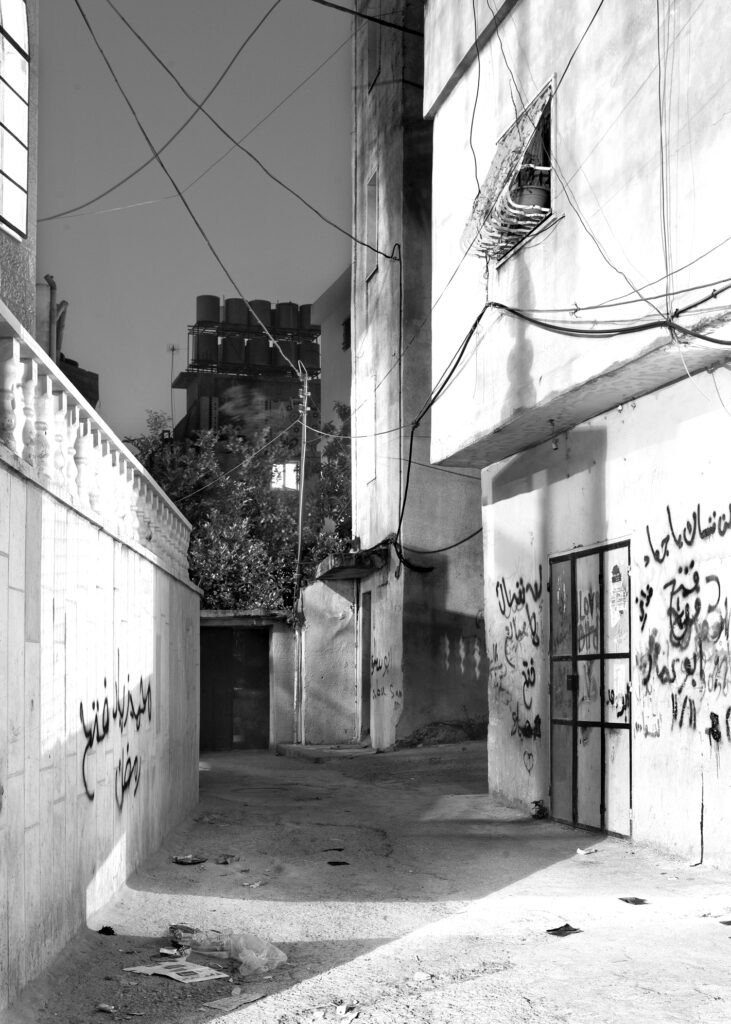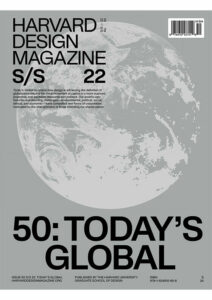The Permanent Temporariness of Heritage
Is “identity” still a useful term for architectural production today? And how does “heritage” relate to it? In a wide-ranging conversation, Sandi Hilal, Alessandro Petti, and Lucia Allais address identity and heritage from personal, historical, and pragmatic perspectives. Hilal and Petti are the founders of DAAR—Decolonizing Architecture Art Research—a research-based artistic practice. Allais is an architectural historian whose work examines design’s participation in global governance, at the intersection of architecture, internationalism, and institutions. In very distinct ways, their practices critique the connection between architectural heritage and identity politics that arose in the late 20th century.
“The promise was that heritage could provide a kind of unique identity and was used as evidence that there was diversity in the world despite globalization,” says Allais. “Heritage became something that you could pick out, as if from a catalog. You had to believe that a specific group of people build in a very specific way in a very specific place; that their architecture was their identity.” Allais’s acclaimed book, Designs of Destruction: The Making of Monuments in the Twentieth Century (University of Chicago Press, 2018), challenges this position, providing instead a nuanced reading of heritage that arose in parallel to the agendas of liberal internationalist organizations. DAAR’s practice also confronts the idea of timeless heritage and of fixed identity; their most recent publication, Refugee Heritage: World Heritage Nomination Dossier (Art and Theory Publishing, 2021), shows how refugees—who live in a stateless condition and are moved against their will—are often attached to the place of their exile, to the camp.
Lucia Allais
If we are going to say that architecture participates in the formation of identity, you believe it’s not because an identity can be read semiotically in buildings. So, could you start by talking about whether identity is important to your work and how it relates to architecture, and to heritage more specifically?
Alessandro Petti
One of the ways to engage with the loaded relationship between heritage and identity is to go around it, and ask instead a more precise and strategic question: is it possible to use the notion of heritage not as a fixed representation of nation-state identity but rather as a right to freedom of movements across nation-state–imposed borders? Most of the time, heritage is used to claim a specific and unique site as part of identity narration of nation-states. What if, instead, heritage is mobilized to connect sites located in different territories?
The notion of heritage in refugee camps forces architecture to operate in more than one site simultaneously: the space of exile and the space of origin. We cannot understand the camp without connecting it with the place of origin. All of our architectural interventions in refugee camps have been conceived as a form to connect the camp with the place of origin, which necessitated what we call a stereoscopic vision that connects the camp with the villages of origin, and vice versa.
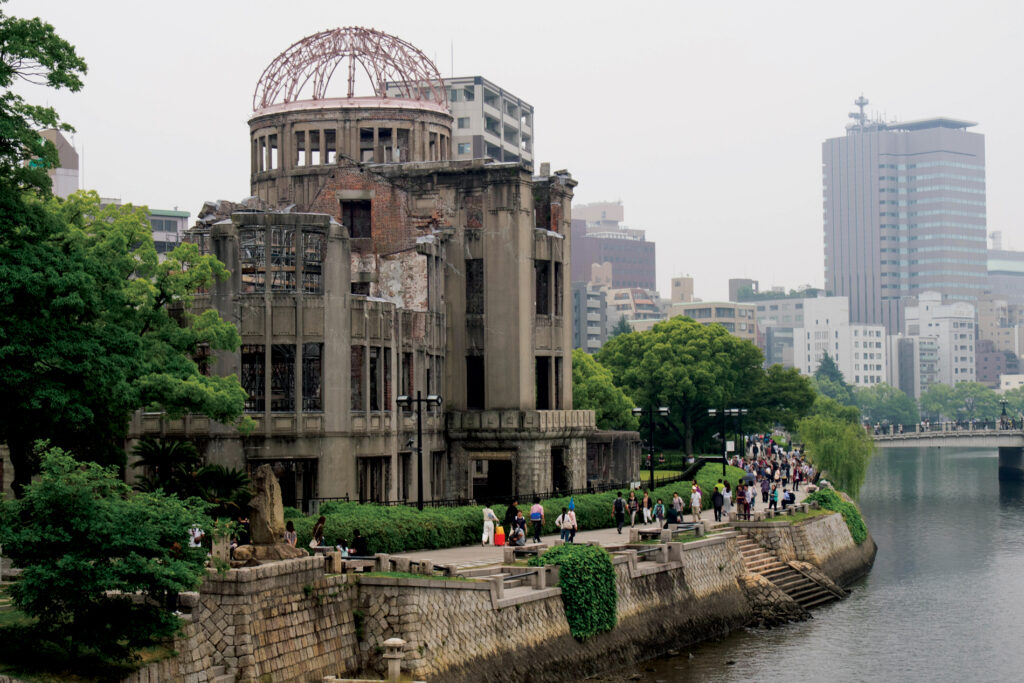
Although refugee camps are initiated by using military grids, with time, people transformed the grids in order to mirror their places of origin. For example, walking today in a refugee camp in Palestine is like walking between the villages from which refugees were expelled, since the camp is divided into neighborhoods defined by the villages of origins. The camp is the closest place one can find to the villages of origin. This urbanity of exile is able to link two stories of two different sites together. Rather than the folkloristic dimension of heritage being linked to the notion of identity, we are interested in investigating the culture of exile that has been produced in exile.
We believe that it is not only important to preserve and celebrate a culture that existed before the nakba [the forced expulsion of two-thirds of the Palestinian population at the time of the founding of the state of Israel], it is equally important to preserve and celebrate the culture that has been produced in exile. This culture of exile emerged despite suffering and marginalization, and it has produced its own social, political, and spatial expressions. How can we preserve and protect a culture that has emerged from the extraterritorial dimensions of refugee camps carved out from nation-states? By extension, we could call it a stateless heritage—a heritage produced by all the people who don’t feel represented by nation-states.
Sandi Hilal
After Alessandro and I met in Venice as students of architecture, we went to work in Palestine. So after living in Italy for 13 years, I returned to Palestine where I was born and lived till the age of 17. I was returning to where I felt completely local and I assumed that nothing had changed. But now I was considered to be the wife of an Italian husband. What does it mean for an Italian person to come and work in Palestine?
What does it mean for us to work together, but to also have a family in Palestine and to move forward in a practice where it is not only about being an intellectual? We identified with refugees in some respects: mobility, being hybrid, not being from only one place, having to deal with being more than one thing, having always to explain. We were uncomfortable with the fact that wherever we were, others were constantly trying to frame us. I was extremely uncomfortable in the role of being the Palestinian woman who had the right to speak about Palestine.
We also identified with the condition of permanent temporariness: the fact that Alessandro was living in Palestine for 10 years on a temporary tourist visa and had no right to work gave us an enormous feeling of instability. Refugee camps have been the place that spoke to us the most. In 2019 we produced a book, Permanent Temporariness (Art and Theory Publishing).
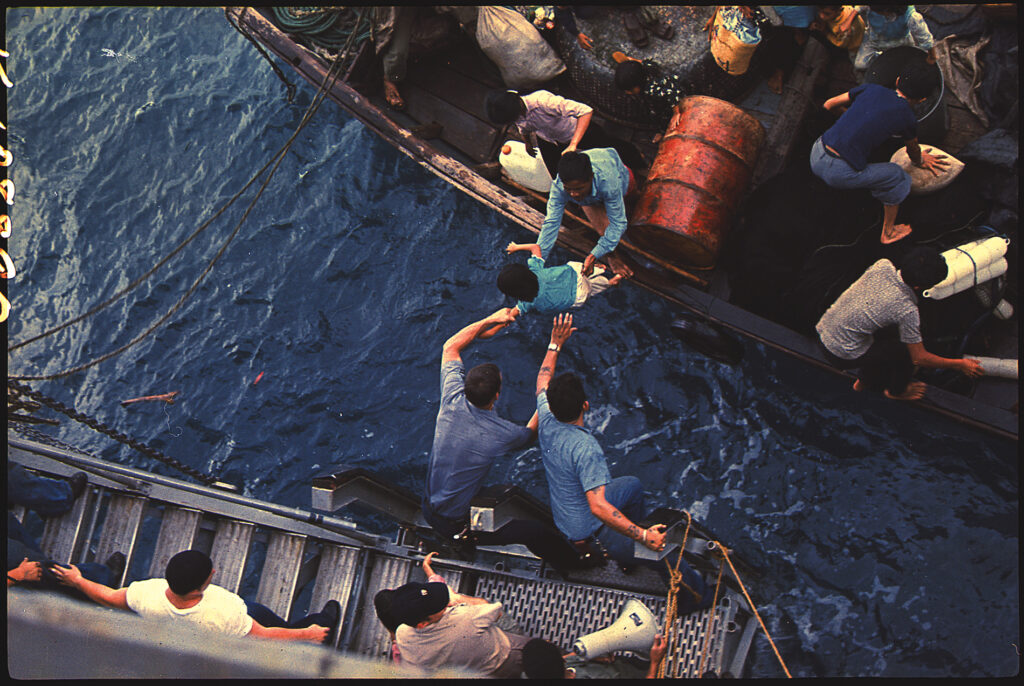
Lucia
So architectural heritage is, for you, not an autonomous, stand-alone form. It is always implicated with other forms, such as language, such as identity papers, such as work visas, such as marriage certificates. Also, you are completely eroding old categories of formal analysis. In Refugee Heritage there are incredible drawings of the historical evolution of a plot in the camp. They show very little formal continuity. In 1949, there were little tents, given by an international organization. And then, 15 years later, there are concrete buildings with the rebar still sticking up. (It’s a global signature of self-built homes where rebars stick out because eventually, you’re going to build a second story.) It’s the opposite of the old idea of strong vernacular form—for example, a pitched roof signifying a certain way of being in the world.
I want to ask you about your relationship with international institutions. You borrowed what the bureaucracy has given you—specifically, you borrowed the format of UNESCO paperwork. You said, “Okay, UNESCO, we will rise to your challenge, but challenge you back. We propose that this architecture deserves the kind of recognition that you give to folkloric, or modernist, or canonical architecture.”
What’s amazing about this move is that the architecture you want to recognize is associated with trauma and violence and mass destruction. UNESCO was started in the aftermath of World War II, and World Heritage was invented in part as a compensation for these events, but it was a very minimal, very regulated kind of compensation. There are only six or seven sites that are allowed to stand in for—to help “remember”—mass death. There is the Genbaku Dome in Hiroshima; there is the Auschwitz-Birkenau concentration camp; there are a few others. Auschwitz-Birkenau is very interesting: it was listed on the condition that no other sites of concentration camps be designated. These large bureaucracies inevitably slide toward the normative, toward a kind of curatorial mentality: “We will have three villas and a couple of Beaux-Arts buildings, and some Japanese architecture and now we can have entire cities.” I think what’s really elegant about your dossier is that it pushes UNESCO to expand World Heritage in a way that it doesn’t necessarily want to expand it.
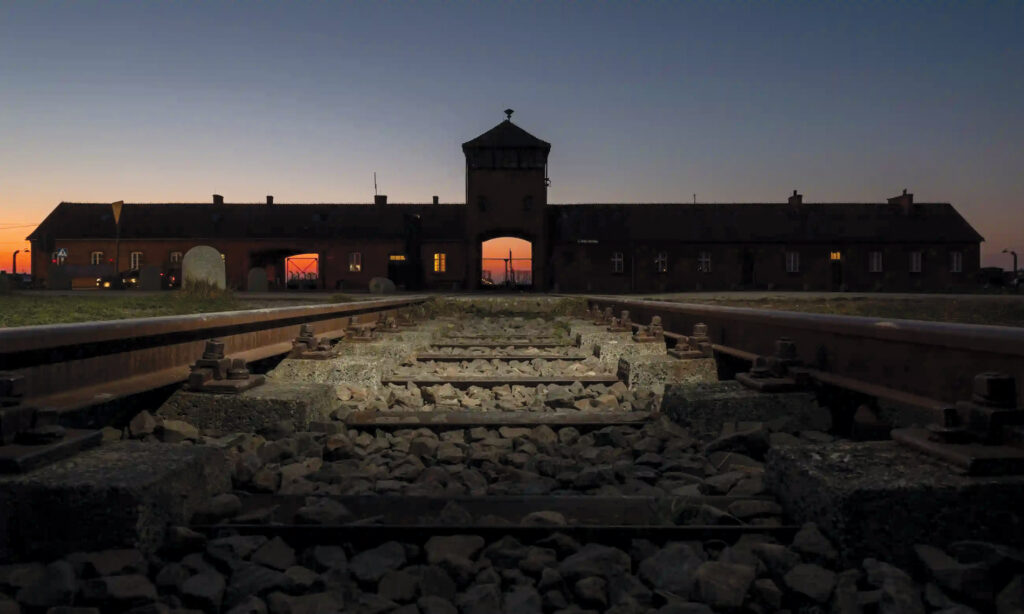
Alessandro
From the beginning, it was very important for us to accept the limitations of trying to fill Appendix 5 [the template used for World Heritage nominations] and the criteria associated with it. It was necessary to ground the conversation we had been having in the Dheisheh camp, in the West Bank, or near Bethlehem, in a format that could be taken seriously. Because when we started asking very painful questions around the history of refugee camps, we needed a frame of reference. It was also a strategy to continue to have political discussions without being trapped in rhetorical political posturing.
Instead of pushing architecture to follow politics, we flipped it the other way round. It is interesting how architecture can sometimes frame political conversations. This has been difficult, but at the same time, very productive, because people were invited to respond to a concrete question—whether or not Dheisheh has a history that is worth preserving. This also allowed us to strategically concentrate not on the final result, but on the process itself; and it destabilized preconceived notions of heritage and camps. Participants in the conversation have been forced to think about the camp beyond humanitarianism and about heritage beyond the state.
In those conversations, we all realized that the criteria used by UNESCO for the nomination of World Heritage sites are not sufficient. We understood the criteria to be like a colonial building in need of renovation: You can destroy it or you can reuse it. We prefer to “profane” it, which means to invent new uses—different from what it was designed for.
Lucia
So in your hands, nominating becomes an anti-colonial strategy. The history of anticolonial resistance offers a whole repertoire of tools, of weapons; you treat a heritage nomination as a weapon. At the same time, I imagine you have to be very precise in what you turn into a tool and what you don’t. One of the great surprises, for me, was your decision to list the refugee camp, in the application, as a “typology.” Yet as you say, you don’t mean this in a humanitarian sense. After all, UNESCO is not the international agency in charge of building or maintaining refugee camps as humanitarian typologies—that would be UNHCR.
Instead, you show that a refugee camp is a kind of city. I am especially struck by the way you just described it—that the camp is divided in neighborhoods that represent places of origin. That is the classic definition of modern urbanity. It is what Georg Simmel tells us: the metropolis is a place where neighborhoods stand in for units of the whole world. It seems to me that you’ve argued refugee camps should be worthy of heritage protection because they’re a new kind of city. Did you think about the city as you were doing this project?
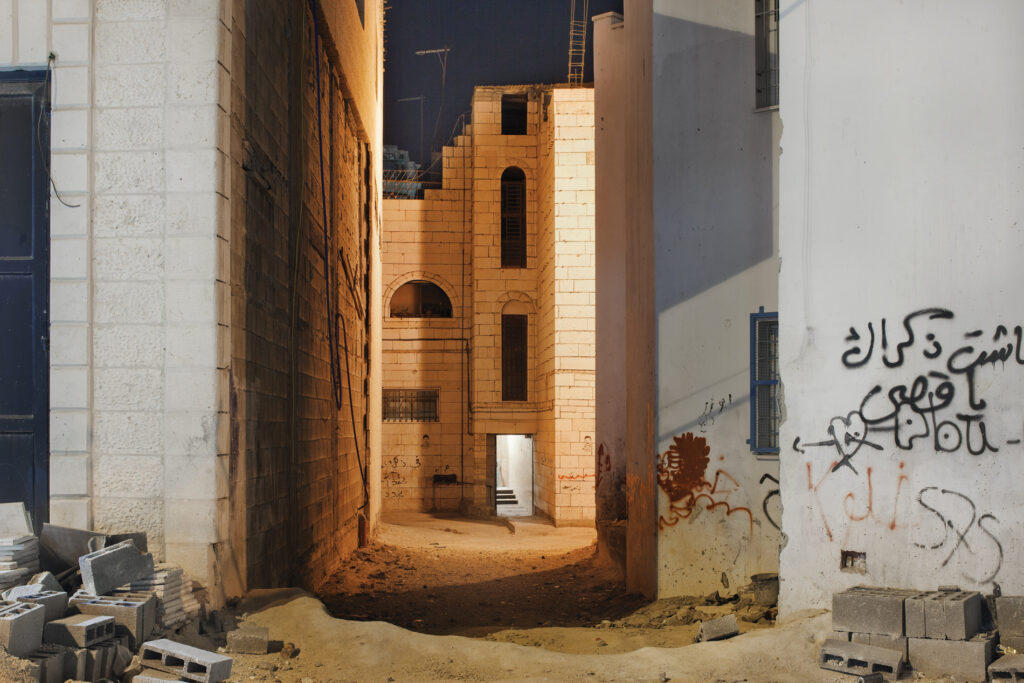
Sandi
I don’t know if I would say that we thought about the city, but I can speak about my own preoccupation. We were worried about whether the nomination would go in a direction where we were still able to defend our political ground. And we wanted it to recognize the Palestinian nakba and that the refugee camps existed in a condition of permanent temporariness. We do believe that this nomination is a way to put forward the right of all people on this planet to move freely and to claim more than one belonging simultaneously. By nominating the camp and the 44 villages, we are also nominating Palestinians’ long struggle for freedom.
The attempt here is to employ the architecture of the camp to become the advocate for the right of return, which is inscribed in international law. So we were using architecture as very important material evidence, rather than speaking about it in an abstract way. In the last 20 years—after the so-called Oslo peace process—the right of return has become weaker and weaker.
Lucia
It is a beautiful idea: that architecture renders material a political struggle, a claim that is usually made only rhetorically with polarizing effects. Architecture makes settlement visible. At the same time, you are working within the framework of an organization, UNESCO, which—like many cultural organizations—usually works by delaying and defusing political tensions.
And so, you leverage a kind of strategic universalism. Do you know Gayatri Spivak’s concept of strategic essentialism? She tells us that occasionally postcolonial subjects have to claim that they are ontologically, fundamentally different, even if they don’t believe in such cultural essences or fundaments. It seems to me that you claim a kind of strategic universalism: you say these buildings exist and should therefore be factored into the universal coverage that UNESCO aims for. And only later, within the minutiae of the bureaucratic form, do you mention the right of return as one of several values attached to the buildings by their inhabitants. It is a very elegant strategy. The effect is that precarity and danger are suspended and universals are discussed. Judgments will come later.
I want to ask you about the media you use. You’ve made a book, you’ve held conversations, produced drawings (and I assume that the drawings were preceded by surveys), and now you are working with a photographer. Is there an end to this chain of representation? How do you stay ahead of the possible freezing in time of this claim to mobility, to recognition, that you are making?
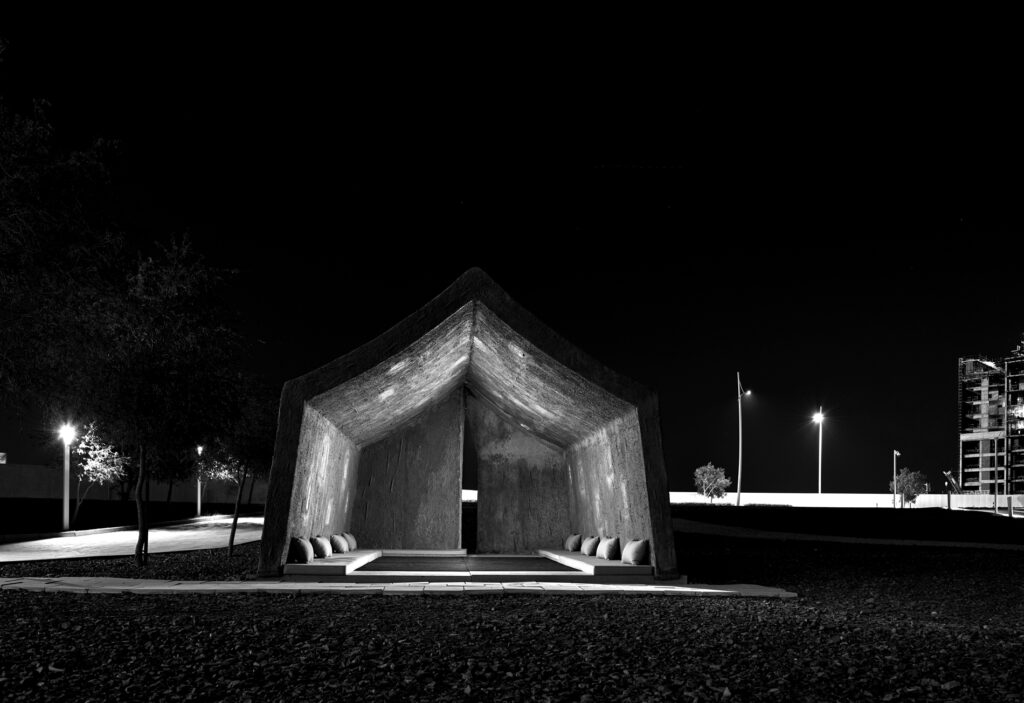
Alessandro
It’s a tough question. Giorgio Agamben says that research projects cannot be finished; they can only be abandoned with the hope that someone will pick them up and continue. Our project went through several phases. It started almost eight years ago as a conversation in Dheisheh refugee camp with people from the camp, local organizations and individuals, heritage associations, activists, and researchers. After more than three years, we felt ready to enlarge the conversation and think about the exhibition as a medium to invite other people to take part. It is a strategy to build alliances and connect with other people and groups with similar urgencies.
For example, during documenta in Kassel, in an assembly organized by Rasha Salti and Paul Preciado, we had moments in which the struggle against normalization of refugee life resonated with transgender struggles against normalization. Those kinds of alliances are politically more deep and embodied than being simply in solidarity, which sometimes reproduces asymmetric relations. The idea of a book usually appears in a phase when we feel the necessity to open up for self-critical reflections, when we need to take some distance from the research project itself.
Lucia
This project took place in 2017. Since then, the conversation around solidarity has completely exploded. There is an amazing moment in one of your books where Paul Preciado told you that as a trans person he relates to the condition of refugees. He says, “Being trans is in a way, a form of being in a refugee camp in the sense that there is no greater place or whole where one has to inscribe oneself.” In the last few years, there have been increasing moments of solidarity of this kind, across human conditions. So, coming back to the question of how you see this project continuing: do you think this new solidarity can be productive, culturally?
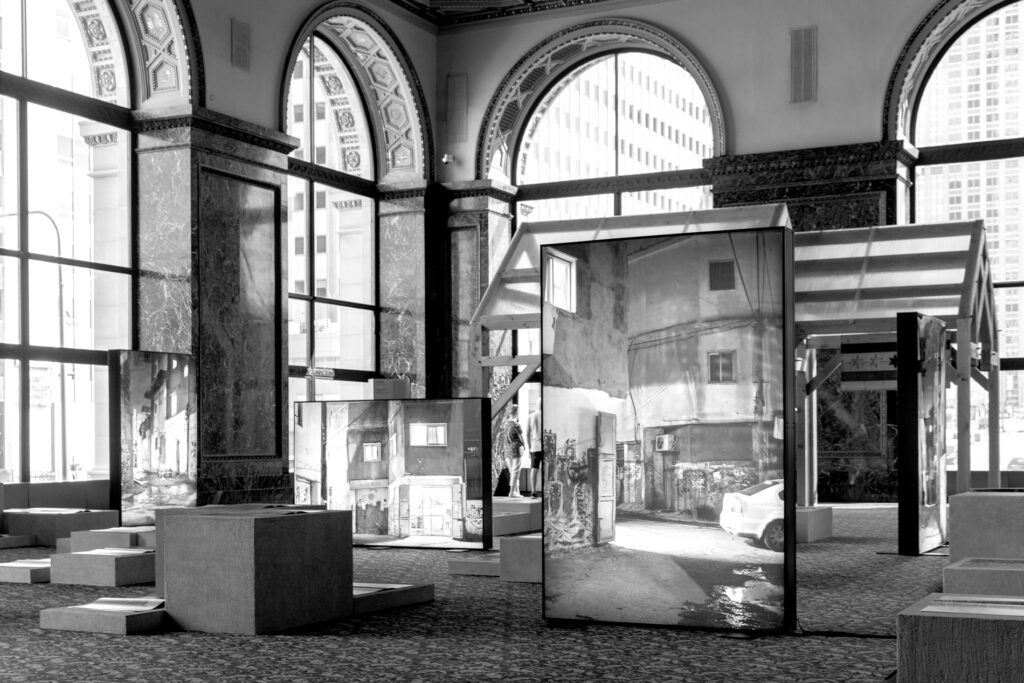
Sandi
That is exactly what our project is trying to achieve. So it’s frustrating when people try to bring us back to a very specific national identity frame. This project absolutely goes against the idea of exclusive identity politics. Rather, it’s about how we connect to each other and fight together for the right of return.
Lucia
Your project—on and about a very specific place on earth—has inspired recognition by people whose identity is defined in relation to completely different places. So, perhaps the generous thing to say about architecture is that you cannot predict who will be interpellated by your own design gestures. That design is a great leap of faith. To me, this leap is also the way heritage is moving. To claim something as heritage is not to say “this is closed, finished, folkloric, established, good.” And to claim that something is potentially the site of an identification is also not to foreclose that identity.
Alessandro
That’s a beautiful conclusion: I see it as a way to close, but at the same time it’s an opening for this sort of different identification.
